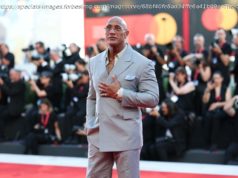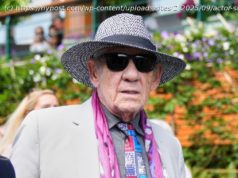How does « Solo: A Star Wars Story » rank among the Oscar-winning filmmaker’s work?
Ron Howard grew up in front of the camera, but he came of age as an artist behind it. The actor-turned-filmmaker has directed well over 20 movies throughout his career, taking an unostentatious approach to popcorn flicks and prestige pictures alike. With « Solo » now in theaters, here’s a look back at the good, the bad, and « The Dilemma. »
26. « The Dilemma » (2011)
What at first appears to be Howard’s attempt at a Woody Allen -style film about crisscrossing relationships gradually turns out to be an inert romantic dramedy. Vince Vaughn and Kevin James are taken well beyond their comfort zones, but Winona Ryder and Jennifer Connelly acquit themselves about as well as possible. Howard’s style isn’t as instantly identifiable as someone like Tarantino, but « The Dilemma » barely even feels like it was made by him.
25. « How the Grinch Stole Christmas » (2000) Dr. Seuss has rarely translated well on screen, and Howard’s take on one of the author’s best-known works is no exception. (It’s also no « Cat in the Hat, » and for that we can be grateful.) Jim Carrey is expectedly hammy in the title role, but watching this movie isn’t likely to grow anyone’s heart by three sizes.
Warner Bros.
24. « In the Heart of the Sea » (2015)
This semi-adaptation of « Moby-Dic »k fails to capture the sweeping power of its source material; more damning, it never tells a compelling story of its own. The sea is a cruel mistress indeed, and for now a truly epic silver-screen version of Herman Melville’s novel remains a white whale.
23. « The Da Vinci Code » (2006)
The greatest mystery in this adaptation of Dan Brown ‘s once-ubiquitous novel is whose idea it was to style Tom Hanks ‘ hair that way. Howard’s most frequent leading man is reduced to an exposition-delivery device here, and there’s never any chance to get caught up in a story that explains every bit of would-be intrigue just as soon as it’s introduced.
22. « Gung Ho » (1986)
Like a lot of other ’80s movies, « Gung Ho » would like you to know how funny Asian people are. An East-meets-West comedy about an auto manufacturing plant that gets bought by a Japanese company — whose strange, rigid ways are just too much for Michael Keaton and his co-workers to handle — this one doesn’t deserve a bailout.
21. « Grand Theft Auto » (1977)
Howard’s feature debut also finds him in front of the camera — the only time he’s made more than an uncredited cameo in any of his films. This feature-length car chase between L.A. and Las Vegas might not be as memorable as your first car, but it isn’t exactly a lemon.
20. « Inferno » (2016)
If you were hoping that Howard’s third adaptation of a Dan Brown novel would be a marked improvement over the first two, prepare for disappointment. « Inferno » has a « Bourne »-like vibe that makes it function better as an action movie, but there’s still no real sense of urgency or drama to it.
19. « Angels & Demons » (2009)
The source material is nothing to write home about, and Howard’s second adaptation of a Dan Brown novel (which was actually published before « The Da Vinci Code ») fails to elevate it. Though a modest improvement over its predecessor, this is essentially two hours of Tom Hanks playing tour guide as the Vatican descends into chaos.
18. « The Paper » (1994)
You’d be forgiven for not remembering (or, depending on how old you are, even knowing) that « Spotlight » wasn’t the first newspaper movie starring Michael Keaton. Not that Howard’s portrayal of a fictional New York City rag using the powers of journalistic integrity to make the world a slightly better place is bad, mind you. It just isn’t especially headline-worthy.
17. « The Missing » (2003)
Howard’s violent, semi-revisionist Western is the other side of the « Far and Away » coin: Where that film shows the promise and potential 19th-century America offered newcomers, « The Missing » displays the grim realities for those who were already here — including and especially the actual natives.
16. « Ransom » (1996)
Howard hasn’t made a lot of movies like « Ransom, » whose kidnapping narrative explores the fine line between justice and revenge. He does well with the darker material, however, once again showing his skill at floating between genres with ease.
15. « A Beautiful Mind » (2001)
The film that won Howard the Academy Award for Best Director — he beat out David Lynch, Robert Altman, Woody Allen, and Peter Jackson — was neither the best film of 2001 nor of Howard’s career. But this Best Picture winner is satisfying in exactly the way you’d expect a biopic about a tortured genius to be, with Russell Crowe and Jennifer Connelly turning in fine performances.
Getty Images
14. « The Beatles: Eight Days a Week » (2016)
It’s little surprise that the Baby Boomer star of « Happy Days » and « American Graffiti » would have such a fondness for the Fab Four. Howard’s documentary on the Beatles’ touring years (1962–66) abounds with concert and archival footage, making for an experience as friendly to devotees as it is to those who’ve yet to be won over by Paul, John, George, and Ringo.
13. « Parenthood » (1989)
This family dramedy’s most lasting legacy may be NBC’s television adaptation, which surpassed its source material sometime in its second season. That said, « Parenthood » is, like a great many of the director’s films, hard to object to and easy to get into; that Howard and Steve Martin never collaborated again feels like a missed opportunity.
12. « Night Shift » (1982)
Years before Tom Hanks entered the picture, Michael Keaton was Howard’s go-to leading man. Their three-film collaboration began with this workplace comedy about two morticians. If a morgue doesn’t sound like the ideal setting for a comedy, that’s sort of the point; still, Howard’s « Happy Days » co-star Henry Winkler works well alongside Keaton, with the two injecting more than enough shenanigans into the proceedings to keep « Night Shift » lively.
11. « Far and Away » (1992) Tom Cruise and Nicole Kidman set course from Ireland and experience their own version of the American Dream circa the late 19th century. The movie loses steam when it gestures toward grand statements, but « Far and Away » is overlooked as a romantic adventure — and a fine showcase for its two leads.
Universal
10. « Rush » (2013)
Though seemingly intended as a star vehicle for Chris Hemsworth, « Rush » ended up serving as a showcase for Daniel Bruhl, who leaves his co-star in the dust. Both Hemsworth and the film itself fare much better than « In the Heart of the Sea, » at least, and the racing sequences are a genuine thrill ride.
9. « Backdraft » (1991)
« Backdraft » is a modest blockbuster by today’s standards, which is part of its charm. The firefighter drama recalls a simpler time when summer movies weren’t all based on pre-existing properties and didn’t lead to a number of increasingly disappointing sequels. (It did inspire a ride at Universal Studios which, in a telling sign of the changing times, was replaced by a « Transformers » attraction five years ago.






